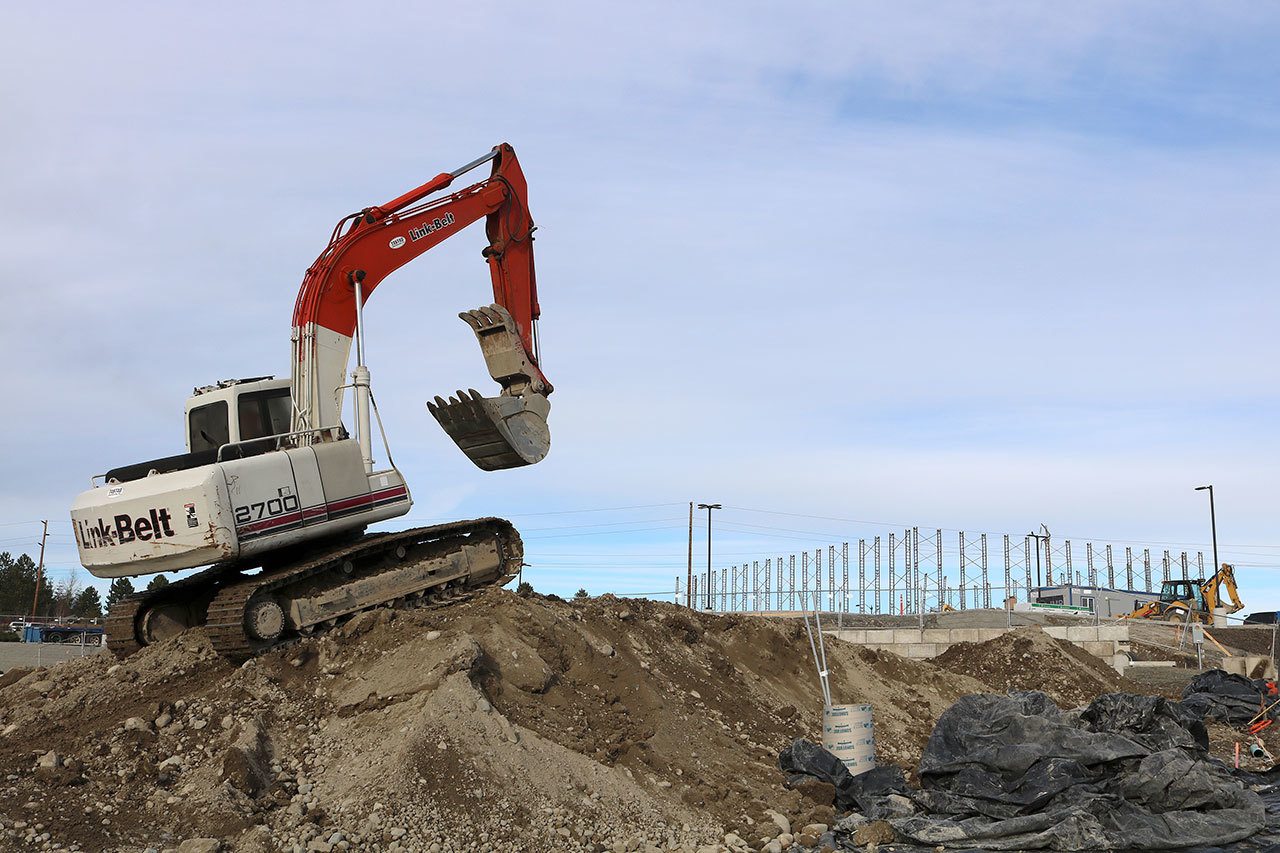With its recent completion of projects such as the Tokul roundabout and phase 2 of downtown improvements, the city of Snoqualmie is now looking to development projects in 2017 and beyond. The new year brings projects ranging from small, local changes, to bigger, multi-year developments.
One example of such a project is the retail development on Snoqualmie Parkway and S.E. Center Street. Snoqualmie’s Community Development Director Mark Hofman said the 43,000-foot Safeway and a planned Bartell Drugs are scheduled to open for business in the summer. The retail-zoned property has plans for other retail buildings, but contracts for those buildings are not yet finalized.
The Safeway is almost complete; some foundation work is left to be done before the outer shell of the building is finished.
“They’ve met every benchmark, had the asphalt in for the parking areas before winter and now they are doing footing foundations for the buildings and then the shells,” Hofman said.
The incoming Bartell Drugs will have a unique twist since Snoqualmie citizens made their voices heard in the development process.
“Based on community emails, they had heard the community wanted an ice cream bar and a beer growler station, so they added that,” Hofman said. “It’s a standard Bartell’s but those two elements will be unique to Snoqualmie.”
Another big project in the works is a potential hotel between Douglas Avenue S.E. and Center Boulevard S.E. on Snoqualmie Parkway. Hofman said a builder has submitted a deposit to the city and would like to break ground some time this summer. The hotel concept is for more than 90 rooms, with a target price in the mid range.
“It’s more in keeping with serving families visiting other residents on the Ridge,” Hofman said. “It’s an alternative to the Salish Lodge, not a direct competitor, aiming for a different price range and families.”
Hofman also explained that the city has been looking for additional lodging for more than a decade. The city’s comprehensive plan identified that lodging in the area was insufficient. Previously, he said, there may not have been enough residents, but now Snoqualmie Ridge is nearing build-out and the city is already at 13,000 people.
“Right now you have to stay in Issaquah or at somebody’s house,” he said. “We were lucky enough that this group (represented by Sun Choi, who was previously involved with a hotel project in North Bend) showed interest.”
Downtown projects
The year will also see the continuation of the city’s downtown revitalization project with work on phase 3, connecting downtown to the Snoqualmie Falls. The city received a grant from the Puget Sound Regional Council for design and planning for the project.
Along with the downtown revitalization, the city has been meeting with the Snoqualmie Tribe to discuss the city’s riverwalk project. One of the elements planned for the project is a feature highlighting the area’s history.
The first phase of the project, to construct one mile of trail to connect downtown with the falls, is the focus for 2017.
Snoqualmie is also looking ahead to longer-term projects, one of which is the potential annexation of the West Snoqualmie Hills property behind the business park on the Ridge. At the end of S.E. Douglas Street, there is a section of unincorporated King County that falls within the city’s urban growth area. Annexation of that area, the last urban growth area in the city, would redraw the city boundary to be consistent with the comprehensive plan, Hofman said.
The city’s interest in the property would be for senior and affordable housing, along with business park expansion.
The city is “projected to balance out at just over 15,000 residents and that completes the residential component of the city’s vision,” Hofman said.
“There are no plans to grow to 30,000 or be Issaquah or Bellevue, the rest from there is revitalize downtown, keeping the Ridge lively and viable and maintaining buffers around the trails and possible open space areas.”


